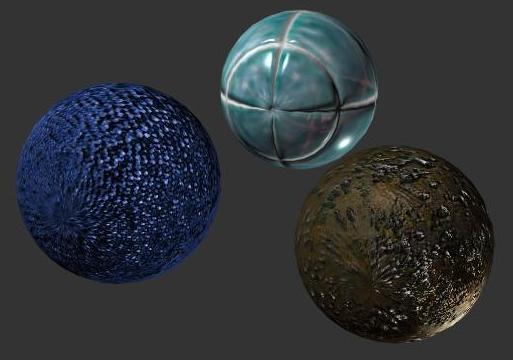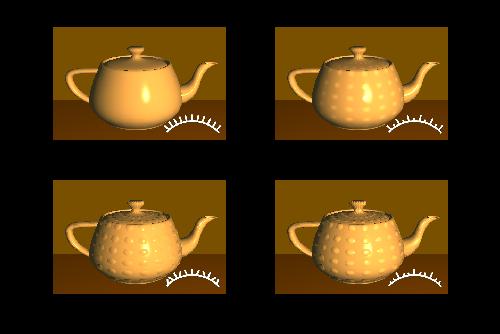Storing other shading parameters in maps
Bump mapping : normal variation
We detect bumps in a surface by the relative darkness or lightness of the surface feature. In local illumination models, this is primarily determined by the direct diffuse reflection term which is proportional to N*L. N is the surface normal and L is the light vector. By modifying N, we can create spots of darkness or brightness.
James Blinn invented the method of perturbing the surface normal, N, by a "wrinkle" function. This changes the light interaction but not the actual size of the objects so that bump mapped objects appear smooth at the silhouette.
Here is an example of bump mapping. Notice that for both this image and the one below that the surfaces appear to have bumps or gouges but that the silhouette of the object is still smooth.
Bump mapping affects object surfaces, making them appear rough, wrinkled, or dented (Blinn, 1978). Bump mapping alters the surface normals before the shading calculation takes place. It’s possible to change a surface normals magnitude or direction.

